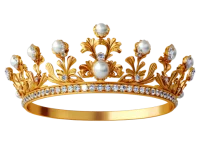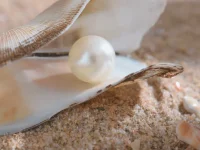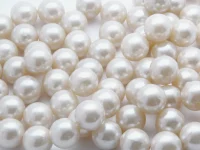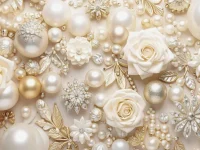Are Pearl Necklaces Still in Style Today?

For centuries, pearls stood alone as the world’s most coveted and invaluable gemstones for their timeless elegance, unique charms, and natural beauty. The ‘Abu Dhabi Pearl’, recognized as the world’s oldest natural pearl, was unearthed in 2017 on Marawah Island near Abu Dhabi. Archaeological evidence dates this remarkable find to approximately 8,000 years ago during the Neolithic period. Many jewelry historians believe that pearl trading can be dated back to as early as the last stage of the Stone Age. Over time and with age, are pearl necklaces still in style?
Historical Significance of Pearls

Wealth, Power, and Prestige: Today, when it comes to pearls, one word stands above all – femininity. But in ancient times, pearls were a definitive sign of extreme wealth and high social status, not just the exclusive jewelry for women. For instance, in ancient Rome, pearls were commonly used to visually distinguish individuals of higher social standing. In medieval Europe, pearls played a prominent part in royal jewelry; the vast majority of their heirlooms were encrusted with pearls and numerous pearl ornaments. Even today, the pearl jewelry still shines brightly through the generations. In addition, in ancient China, pearls held profound cultural significance as esteemed treasures. Regarded as embodiments of wisdom, purity, and aristocratic refinement, these luminous gems were also potent symbols of prosperity. Beyond their aesthetic allure, pearls served multifaceted purposes: they graced elite jewelry collections, embellished imperial regalia, and even featured in time-honored medicinal practices.
Purity and Grace: Pearls embody purity, innocence, and graceful elegance, their timeless beauty accentuated by the delicate whiteness and silky texture of white pearls. These lustrous gems are universally associated with fresh starts and sincere intentions, making them enduring symbols of new beginnings. In modern times, pearls are still among women’s must-have accessories for formal occasions, including but not limited to weddings, graduations, and official meetings.
Love and Marriage: Pearls have been cherished symbols of love and matrimony for centuries, embodying ideals of purity, abundance, and eternal devotion. Their sacred ties to divine feminine figures such as Aphrodite and Venus trace back to the mythologies of ancient Greece and Rome, where these luminous gems were believed to be tears of the gods or solidified moonlight. In ancient cultures, pearls were believed to bring good luck and offer protection to newly-married couples. That’s why today’s brides still prefer to buy real pearl necklaces, real pearl earrings, and real pearl bracelets before their wedding day.
Myth and Protection: In Chinese mythology, pearls were said to originate from the head of a dragon, which guarded these precious gems in its jaws. To acquire them, one had to demonstrate extraordinary bravery by defeating the dragon, as the pearls represented both wisdom and courage. Japanese folklore, meanwhile, viewed pearls as the solidified tears of mystical water beings, including mermaids, nymphs, and angels. In the legends of ancient Greece and Rome, pearls were linked to the goddesses of love – Venus and Aphrodite – symbolizing beauty and divine affection. Some Greeks believed that wearing pearls on one’s wedding day would prevent a bride from crying, bringing her a happy marriage and a long-lasting relationship.
How Pearls are Formed

The formation of a pearl varies by its type: natural pearls (nucleus-free pearls) and cultured pearls (nucleated pearls).
Natural Pearls: Natural pearls are also known as nucleus-free pearls, mostly seawater pearls, including but not limited to Akoya pearls, Gray Akoya (Madama) pearls, South Sea (Nanyang Golden) pearls, and Tahitian pearls.
Natural pearls are formed through a fascinating biological process. When a foreign object, such as a grain of sand or a tiny parasite, enters a mollusk’s shell, the creature initiates a defense mechanism. The mollusk’s mantle tissue begins secreting nacre, also known as mother-of-pearl, a lustrous composite material. Over an extended period, often spanning multiple years, this secretion forms concentric layers around the intruder. Through this gradual accumulation of nacreous deposits, the irritant becomes encased within multiple layers, ultimately transforming into a radiant natural pearl.
Cultured Pearls (Freshwater Cultured Pearls): Cultured pearls are created through a controlled process where a pearl farmer carefully introduces an irritant – such as a tiny bead or tissue fragment – into a mollusk’s shell. In response, the mollusk secretes successive layers of nacre (mother-of-pearl) to encase the foreign object, mirroring the natural pearl formation mechanism. This method, called nucleation, accelerates the timeline of pearl development. Over extended periods ranging from months to years, the gradual accumulation of nacre layers results in the finished pearl’s luster and structure.
How Pearl Necklaces are Made

The creation of pearl necklaces involves several meticulous steps. Initially, pearls undergo preparation, including cleaning, quality grading, and drilling. Next, they are carefully selected to ensure uniformity in size, shape, and color. The pearls are then threaded onto a silk or nylon cord, with knots or seed beads placed between each pearl to prevent abrasion. The strand is secured with a clasp at the ends, and the knots also serve as a safeguard in case the thread breaks.
The four-step process:
- Cleaning & Finishing: Pearls undergo meticulous cleaning to eliminate impurities and amplify their natural radiance.
- Sorting & Grading: Pearls are classified according to their quality, which is determined by factors such as size, shape, luster, and surface flaws.
- Drilling: Each pearl is carefully drilled with precision tools, an essential step before stringing them into jewelry.
- Cohesive Design: Jewelers handpick pearls with similar traits to ensure a cohesive and beautiful design for the necklace.
Suitable Occasions for a Pearl Necklace

Pearl necklaces exude timeless sophistication, effortlessly enhancing both formal soirées and casual daytime ensembles. Their versatility lies in the delicate interplay of size, luster, and arrangement, allowing them to harmonize with any setting – whether understated elegance or bold statement-making.
Formal events
Classic pearls are an enduring staple for black-tie events, galas, and other sophisticated evening occasions, adding a refined and elegant final touch.
Statement pieces: Classic pearls remain a timeless essential for formal gatherings such as black-tie affairs and galas, offering a sophisticated finishing touch that exudes understated elegance.
Semi-formal and business settings
A pearl necklace effortlessly blends sophistication with elegance, making it an ideal accessory for corporate settings, evening soirees, and other semi-formal events.
Classic strands: A single-strand choker or a princess-length necklace pairs perfectly with a fitted blazer and blouse.
Weddings
Pearls have long been cherished as a symbol of purity and innocence, making them a timeless choice for wedding attire – whether for the bride, bridesmaids, or guests.
For the bride: A pearl necklace or a pearl-and-diamond set is an elegant and classic accessory, adding sophistication to the bridal look.
For bridesmaids: A delicate, understated pearl necklace offers a beautiful and versatile touch, complementing any bridal party ensemble.
For guests: A pearl necklace effortlessly enhances a floral dress or elevates a minimalist outfit, making it a perfect choice for wedding attendees.
Pearls have transcended their traditional association with formal occasions, now seamlessly integrating into everyday wardrobes as versatile style statements. To achieve contemporary elegance, consider these styling techniques:
Layering: Create dynamic texture by combining pearl necklaces in varying lengths or mixing them with minimalist metal chains. This approach works beautifully with relaxed ensembles like denim jackets paired with crisp white tees.
Material harmony: The contrast between pearls and casual fabrics – such as the softness of sweaters, the ruggedness of denim, or the flow of blouses – produces effortlessly chic outfits.
Practical elegance: Freshwater pearls are particularly suited for daily wear, offering durability alongside a spectrum of colors and organic shapes that adapt to personal style preferences.
Milestone celebrations
As symbols of wisdom and new beginnings, pearls are a meaningful gift for special milestones.
Graduations: A pearl necklace is a great graduation gift, representing the wisdom and achievement gained during years of study.
Birthdays: With their classic beauty, pearls are appropriate birthday gifts for all ages.
Valentine’s Day: Pearls are a unique, natural gem that takes time to form, much like a cherished relationship. Gifting a pearl necklace is a way to express enduring love and can become a treasured heirloom for future generations.
Anniversaries: Pearls are the traditional gift for the 30th wedding anniversary, also known as the “Pearl Anniversary”.
In the modern era, advancements in pearl cultivation techniques and innovative processing methods have revolutionized pearl jewelry designs. This evolution has given rise to an extraordinary array of styles – from classic strands to contemporary statement pieces – allowing pearls to shine on every occasion. Join us in exploring this exquisite collection, where each pearl necklace tells a unique story of elegance and craftsmanship. Discover your perfect pearl necklace today and embrace the timeless beauty that only pearls can offer at Wang Jewelry.
